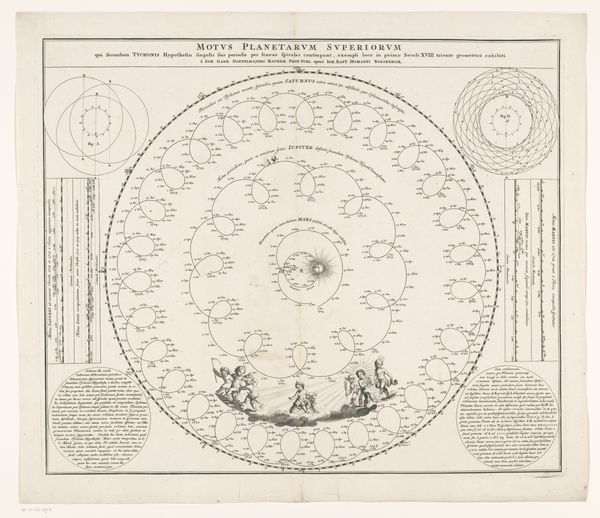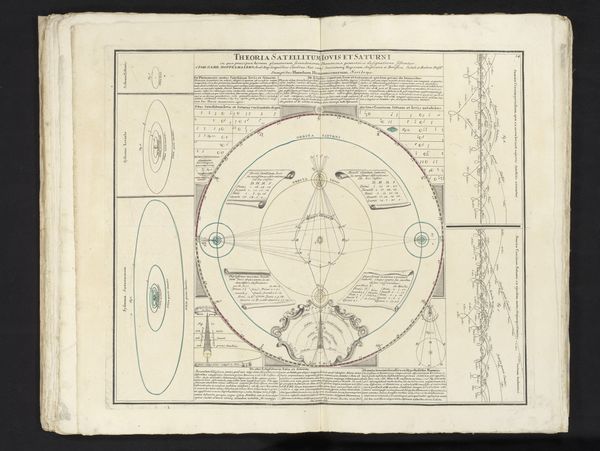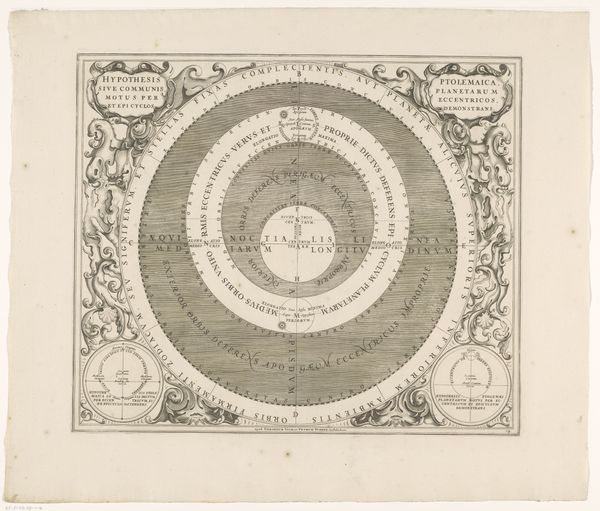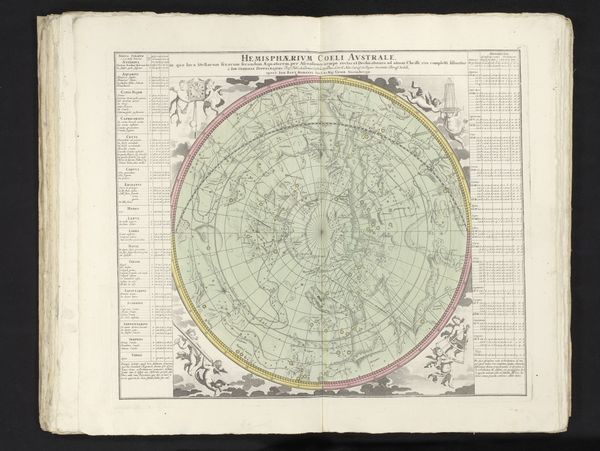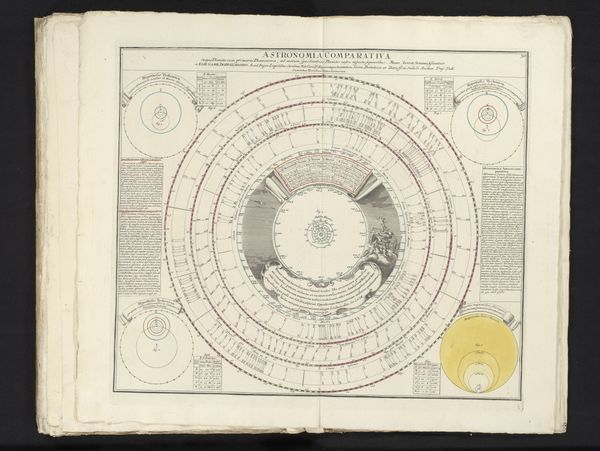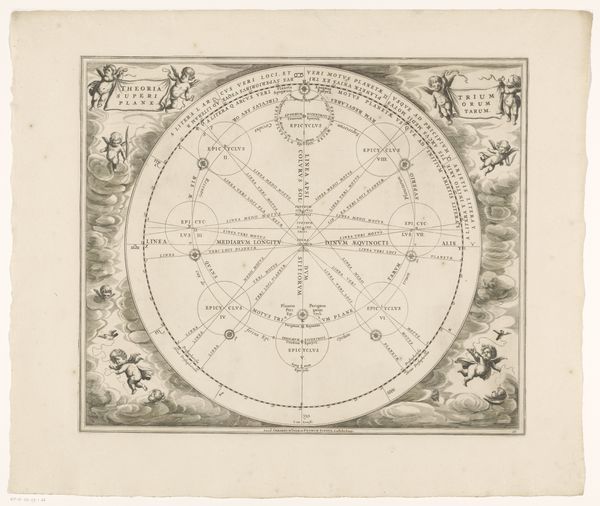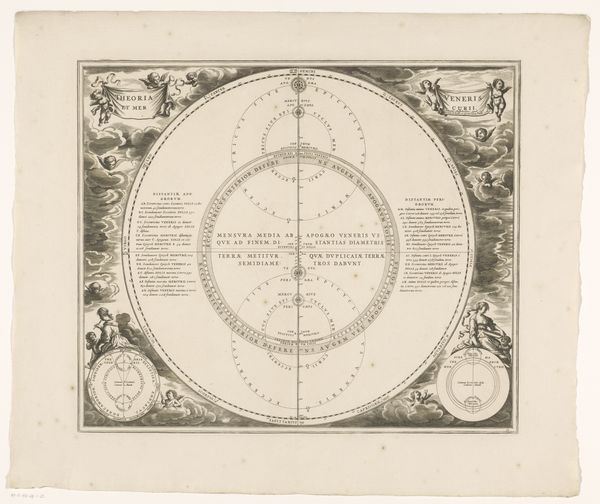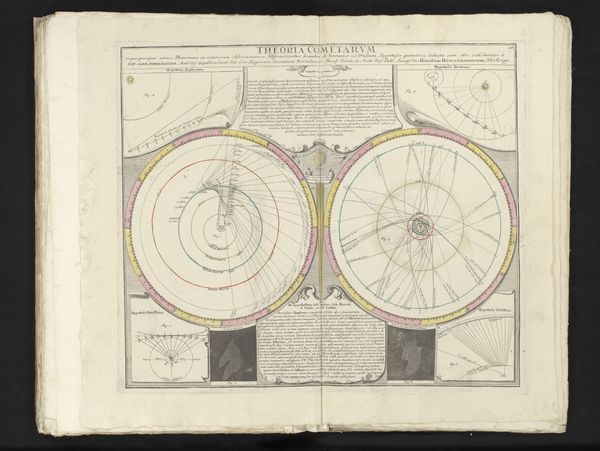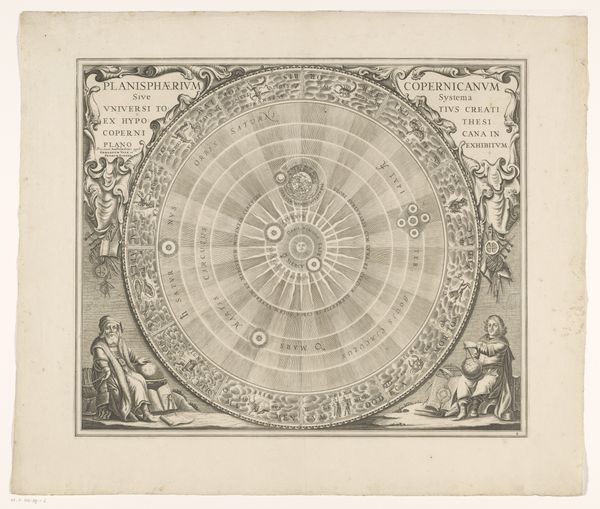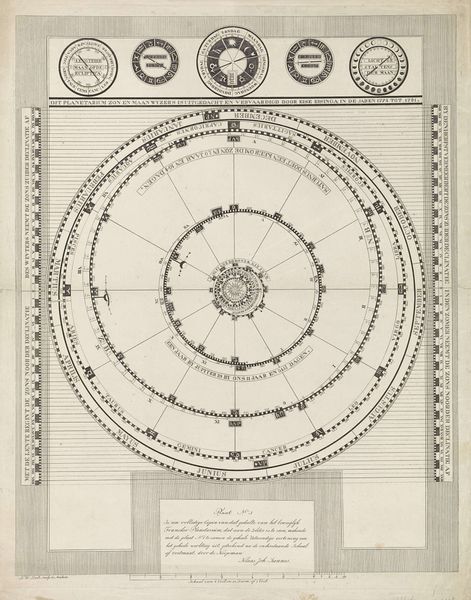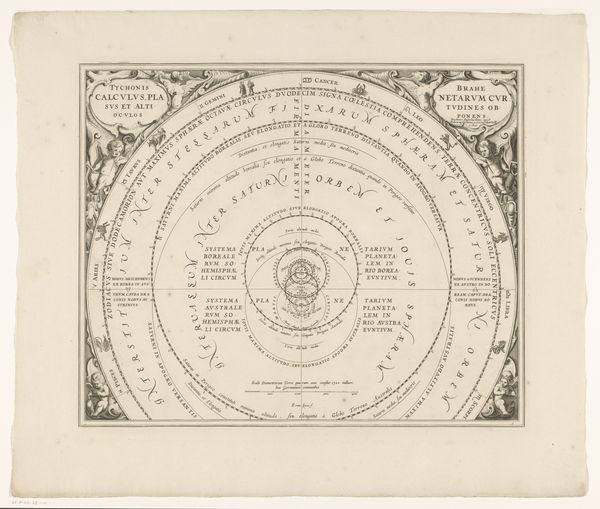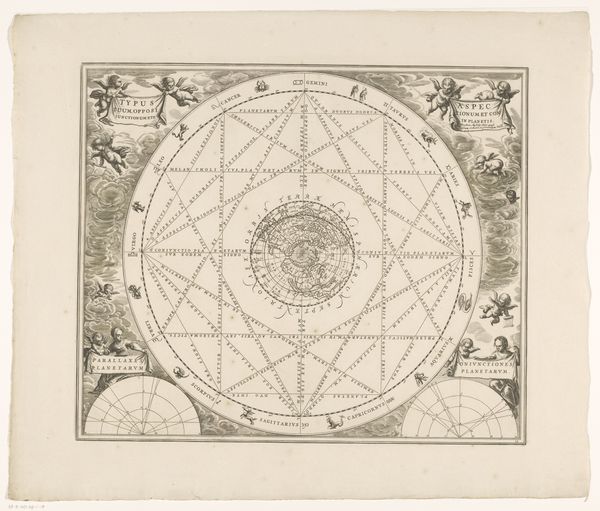
Hemelkaart met de banen van Saturnus, Jupiter, Mars en de Zon, volgens Brahe 1742
0:00
0:00
anonymous
Rijksmuseum
print, paper, engraving
#
baroque
# print
#
paper
#
geometric
#
history-painting
#
engraving
Dimensions: height 494 mm, width 576 mm
Copyright: Rijks Museum: Open Domain
Curator: Look at this beautiful, detailed engraving! It's called "Hemelkaart met de banen van Saturnus, Jupiter, Mars en de Zon, volgens Brahe," or "Celestial map with the orbits of Saturn, Jupiter, Mars and the Sun, according to Brahe". Dating from 1742, it’s an anonymous piece, rendered on paper and showcased here at the Rijksmuseum. Editor: My first impression? It’s overwhelmingly intricate. A dance of circles and annotations... feels almost like trying to decode a secret language. The overall aesthetic definitely places it within the Baroque period with all that detail. Curator: Exactly! Think about what it meant to create such a visually complex representation of the cosmos in 1742. It’s an artifact of evolving scientific thought. Brahe, of course, was a pivotal figure bridging the gap between Ptolemaic and Keplerian models. How does this visual depiction connect with you on a deeper level? Editor: What strikes me is the embedded power dynamic. Science was intertwined with cultural and religious narratives. I see these celestial maps, not just as diagrams of the solar system, but as projections of societal hierarchies – who had access to knowledge, who defined it, and who benefited from it. Look at how a god-like figure, presumably Apollo is central, larger than anything else. The engraving also invites conversations about colonialism. Who had the ability and tools to explore new geographies? Curator: Absolutely. Furthermore, the geometric forms – circles, spirals, lines – represent humanity's attempts to impose order and understand the divine order that shapes it. Consider the role that this piece might have had for elite individuals during that period and what social performance that kind of consumption represented. The acquisition of scientific knowledge, as this print demonstrates, contributed to shaping societal perceptions, contributing, potentially, to discriminatory views based on limited understandings. Editor: Thinking about its contemporary relevance, "Hemelkaart" forces us to address epistemic violence and accessibility. Who gets to interpret the "maps" of our social and scientific reality today, and how can we challenge dominant narratives to build more inclusive maps of our present and future? It invites critique and resistance. Curator: It seems even a historical document like this print reflects very profoundly how power and knowledge production work even today! Editor: Exactly! Thanks for unveiling these important layers of complexity and the invitation to a broader social narrative beyond aesthetics and scientific thought!
Comments
No comments
Be the first to comment and join the conversation on the ultimate creative platform.
